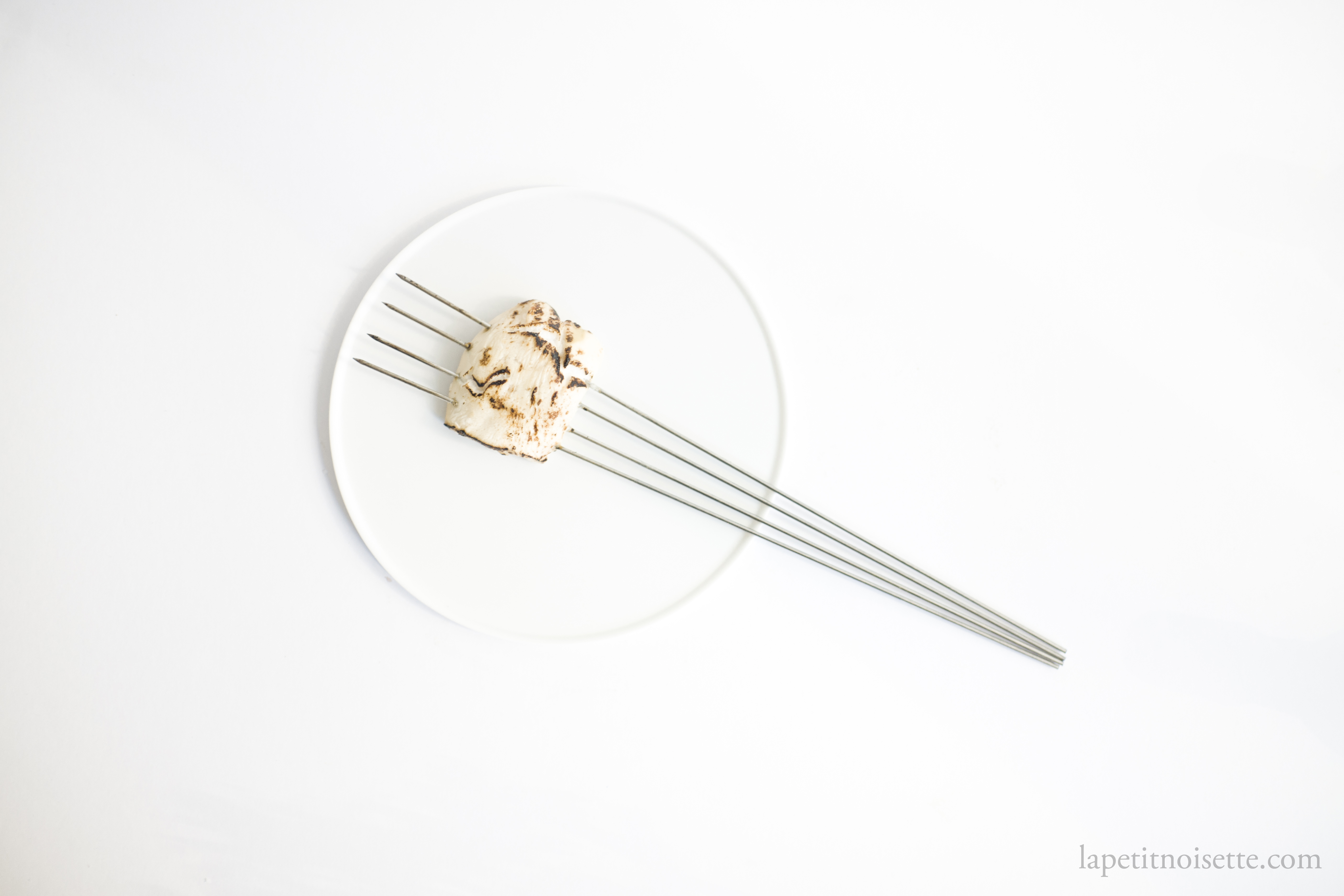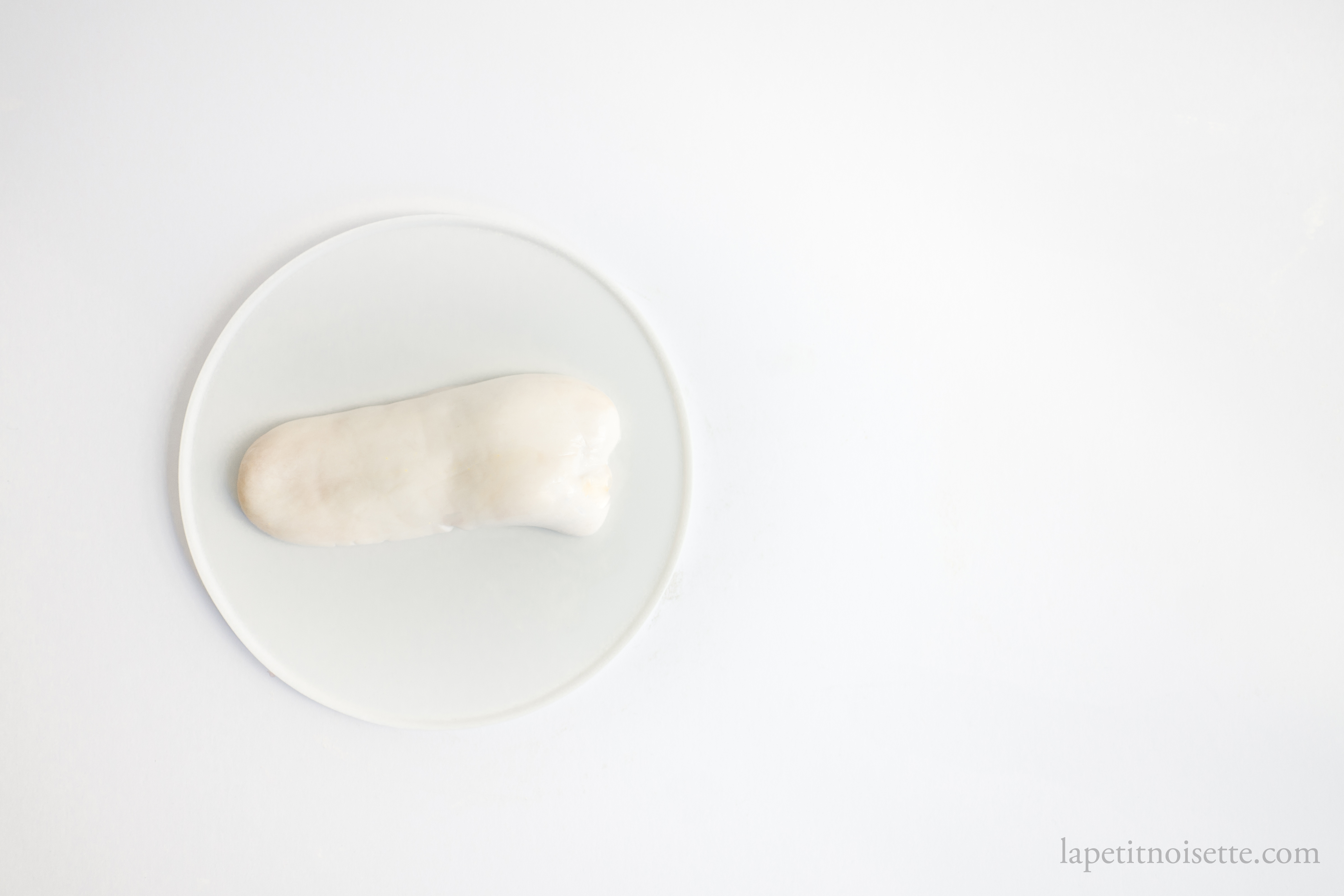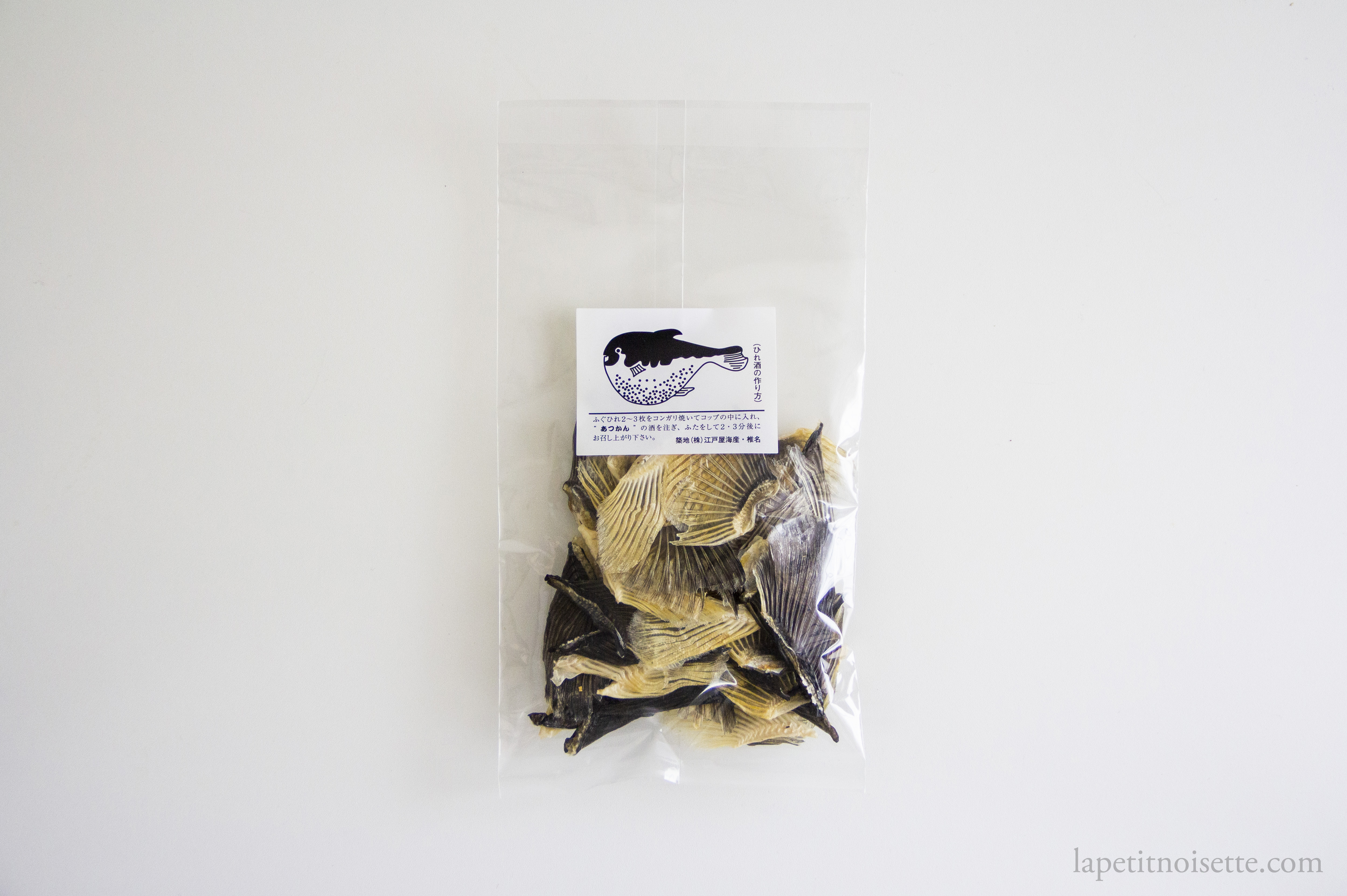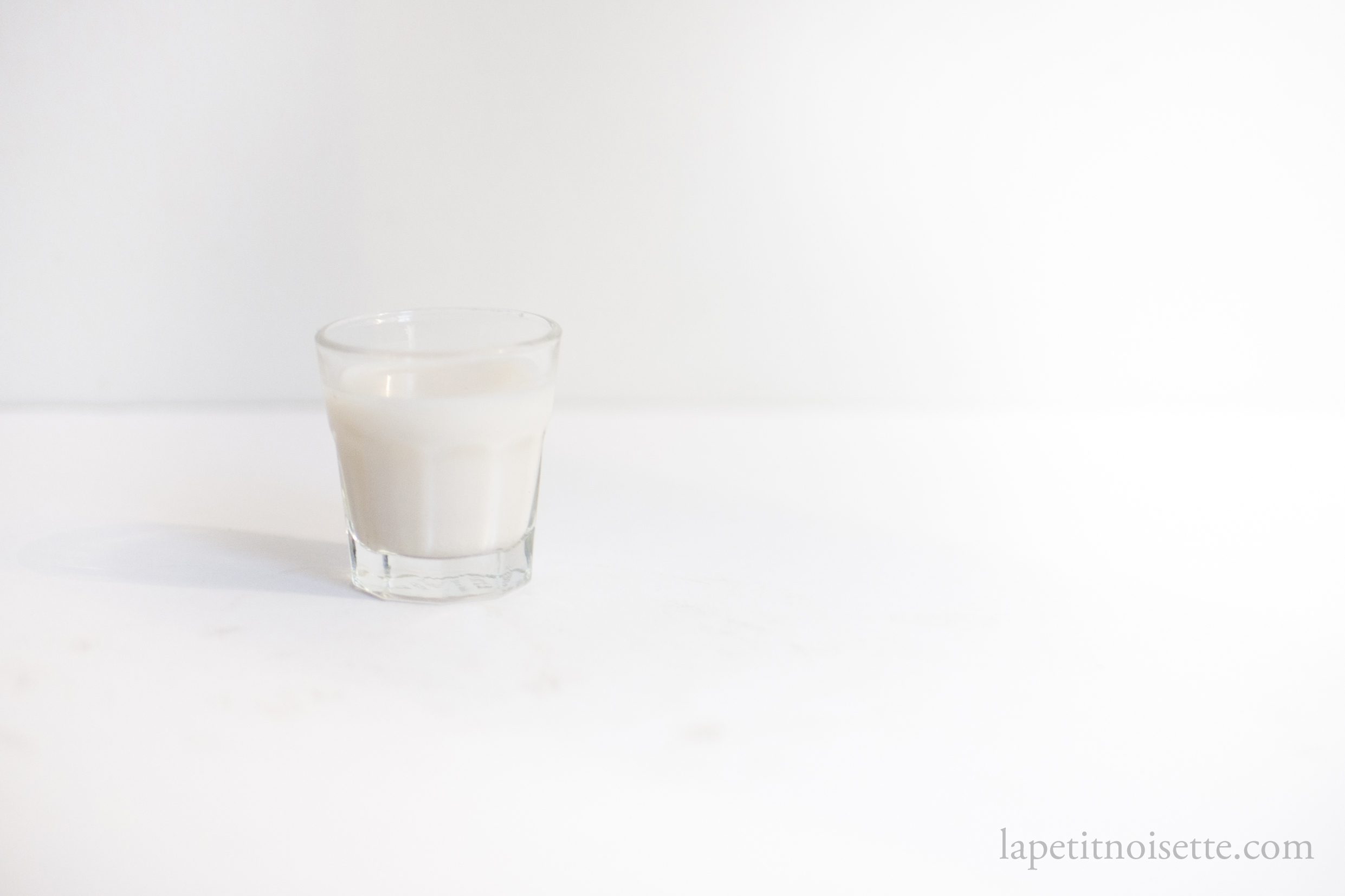
This article is going to focus on two types of “cocktails” or drinks served at pufferfish restaurants, shirako sake and hirezake, which are sake mixed with the milt or sperm of the pufferfish and warm sake infused with the toasted fins of the pufferfish respectively. This is a tribute to the famous Fugu restaurant Zuboraya (づぼらや) in Osaka, with its iconic puffer fish lantern hanging outside, that has closed down after being opened in 1920 due to the impact to business from the coronavirus. Of all the puffer fish eaten in Japan, the most sought after species has to be the tiger puffer fish or Torafugu (Takifugu rubripes/虎河豚). Whilst the restaurant I worked at never served the meat itself, we used to receive deliveries of its soft white milt (shirako/白子) during the winter, which we would present to the customers before taking it to the back of the restaurant to grill over charcoal and serve with ponzu sauce. Zuboraya’s ponzu sauce was amongst the most legendary and will be a focus of a blog post in the future (along with the recipe of ponzu we used at the restaurant).
Eating puffer fish in Japan has always been one of those dishes that have been overhyped to tourists, with newspaper articles and YouTube videos using clickbait titles along the lines of how the world’s most poisonous dish tastes etc. However, eating puffer fish in Japan is actually a very safe affair, as people who are allowed to breakdown and serve this fish are required to undergo an extremely stringent examination that takes at least three years of training for. If I’m not mistaken, off the top of my head, the exam not only requires you to correctly identify all commercially viable species of puffer fish served in Japan but also skin, gut and fillet a puffer fish under a time trial. Because of such stringent requirements, it’s fairly safe to eat at any puffer fish specialty restaurant in Japan. I personally am not actually a big fan of puffer fish as I find the meat to be rather chewy and tasteless. It is one of those ingredients prized for its texture and subtle taste rather than its full forward strong fish like tuna or mackerel. Plus since neither I or you are certified in killing puffer fish, it’ll be impossible to post such a recipe.
You can actually buy pre-cut pufferfish parts and meats from some fishmongers and high-end supermarkets to take home to make your own hotpot. As always, Japan has a tendency to eat their favourite fish to the brink of extinction, and the same issue is happening with pufferfish. The same story always repeats itself as with Tai, Shima Aji, Unagi etc, with the price of wild pufferfish going higher and higher each year, and farming initiatives beginning to take place. Nowadays, farmed puffer fish are typically grown for 3 years before harvesting, but are sold for a lower price compared to wild ones. If I’m going to post a recipe on puffer fish hotpot/nabe I’ll be more interested in trying out the new farmed variety of pufferfishes grown in Japan and China that have had the poisonous tetrodotoxin bred out of them.

Instead, this article is going to focus on its sperm or milt, known as shirako (白子) in Japanese, is a delicacy with a light and creamy taste which is slightly similar to tofu. The two most famous kinds of shirako you’d typically find in Japan are from cod (タラ) and puffer fish but given that you’d only find puffer fish milt at high-end restaurants and cod milt is found at many other restaurants and izakaya’s, the use of the word shirako mainly refers to cod milt unless otherwise stated normally. The milt from cod is also unique in its brain-like wavy shape so it can’t be used interchangeably with puffer fish milt which is more like a slab. The milt of mullet and salmon is also sometimes consumed in Japan and is more similar with that of puffer fish but has a much stronger fishy taste. The highest end puffer fish shirako tends to be pure and snowy in colour with a rich with an almost tasteless quality. The larger the size of the shirako slab, the more expensive it is, with the largest ones clocking in at a bit more than 1kg for around 30000 to 40000 yen. You can occasionally find smaller pieces which is what I used here in this recipe.
As mentioned before, puffer fish milt can simply be grilled over charcoal, sliced and then served with ponzu, or made into this lesser known interesting drink of milt whisked into sake. The milt itself is actually encased in a membrane which can be quite delicate to handle, and feels like it’s about to fall apart when you lift it up. Interestingly enough, the milt does not flow out of the membrane when it’s cut as it has a custard-like texture but will dissipate slightly when submerged in water. Care should be taken not to break the membrane when you handle the milt. To make this recipe, the milt is first blanched before being whisked in a bowl and passed through a tamis sieve to remove the membrane. The milt is then added to a cup along with warm sake and whisked with a bamboo whisk until frothy (a matcha whisk works well here). There are several things to note here. Firstly, some high-end establishments that use only the highest quality milt don’t even bother passing the milt through a sieve as the membrane just melts away when it is whisked in the bowl. There is also the option of grilling the milt before blanching it to impart a slightly toasty taste into the sake but that varies according to the various chefs’ styles. This recipe can also be made using mullet milt (ボラ白子) but it has the tendency to be slightly fishy unless it is washed and soaked in cooking sake before hand. If using mullet milt, I recommend toasting it in the oven or over a flame/charcoal before using, especially if it is not as fresh. The membrane on the outside of the mullet milt is also extra thick so do pass the milt through a tamis sieve.

Tiger Pufferfish Milt Sake (虎ふぐの白子酒) or Mullet Milt Sake (ボラの白子酒)
- 30g to 40g of milt per 180ml of Sake
- Cut the milt to size and skewer with metal skewers.
- Grilled over an open fire or charcoal grill until toasted spots are visible on the outside, around 3 minutes. Alternatively, balance the ends of the skewers on the edge of a metal tray so that the milt is hanging in the air and roast in the oven at high heat (~200°C).
- Pass the milt through a tamis sieve to remove the membrane and any burnt bits.
- Place the sake in a small pan or metal teapot and heat to 80°C.
- Spoon the milt into a glass with the appropriate amount of sake and whisk until frothy.
I’d always been told that only the more unrefined and harsher sakes are served at a warmer temperature to hide their bad qualities as the lower temperature not only evaporates some of the unpleasant characteristics, but makes the more aromatic ones volatile and easier to smell. As such, the western sake world is always obsessed with their jun mai daiginjo that is designed to be served cold. There actually exists a whole category of sake that is designed to be served warm, known as kanzake (燗酒) that unfortunately has been hit by the stigma against it, especially as the consumption of sake is declining in Japan and people are seeking to find new markets outside. This mentality is starting to change however, and it’s now possible to purchase high quality kanzake from specialised sellers online in most countries.
Kanzake varies in terms of temperature they’re supposed to be served at which are:
Hot (熱)
55~60℃ 飛び切り燗(tobikirikan/とびきりかん)
50℃ 熱燗(atsukan/あつかん)
45℃ 上燗(jyokan/じょうかん)
Warm (温)
40℃ ぬる燗(nurukan/ぬるかん)
35℃ 人肌燗(hitohadakan/ひとはだかん)
30℃ 日向燗(hinadakan/ひなたかん)
What you’d instantly notice here, is that the highest category of serving warm sake here is 60℃ which is much lower than the required 80℃. This is because alcohol (or ethanol specifically) evaporates at 78 °C and you’d typically not want to evaporate all the alcohol before you drink it ;P, so this recipe isn’t strictly in the range of warmed sake. The higher temperature is needed to better combine with the milt, and in the next recipe, to better extract the flavours from the puffer fish. In Japan, they heat up their sake using a machine known as a shukanki (酒燗器酒), but just heating your sake up over the stove until it reaches the desired temperature on a thermometer, or until small bubbles appear at the bottom of the pan works as well. If you dare you could even try using a sous vide machine to warm your sake, but in a bag or vessel of course, not directly into the machine.

Tiger Puffer Fish Hirezake Recipe (虎ふぐのひれ酒)
Similarly, to make sake infused with puffer fish fin, you’d typically want to to toast the fins over charcoal or a flame until well toasted before infusing it in warm sake. Here you have two options, which are to toast fresh fins vs toasting professionally dried fins, which is what you’d most probably be using. You can purchase these fins online or in most markets in Japan. The toasting method for both fins is the same, it is just that the fresher fins have more moisture in them. The key point to focus on when toasting the fins here is evenness. The base of the fins are thicker than the edge, and the edges of the fins are more likely to burn, just like when toasting frames for the akadashi miso soup recipe. If using fresher fins, remember to hold the fins higher above the heat source for a more gentle toast compared to dried fins which toast fairly quickly.
- 1 to 2 fins for 180ml of sake
- Toast the fins for 2 to 3 minutes on each side until well browned but not burnt. If you accidentally burn the tips of the fins, snip off with a pair of scissors.
- Heat the sake to 80℃ and add the toasted fins into the sake.
- Place a lid over the cup of sake and allow it to steep for 3 to 5 minutes. If your cup has no lid, simply use a piece of aluminium foil.
- As per done in restaurants, serve with the lid on the sake, and upon opening, light the alcohol fumes with a match/lighter.
* Important note here, only the skin of tiger fugu is edible and thus the fins can be used for this drink. Most other puffer fishes have poisonous skin. If you are buying dried fins you’d have nothing to worry about but if using fresh fins you’d just want to double check, though I doubt you’d be able to buy fins from the poisonous variety anywhere.

Nihonryori Ryugin’s Hot Tiger Pufferfish Fin Sake with Milt and Truffles (日本料理 龍吟の虎ふぐ白子のひれ酒)
Finally, the legendary Ryugin produces a luxurious version of this drink that combines both the fins and milt. This is my take on the recipe but I believe it to be extremely accurate of what they do. In the past, they have used the sake brand Yamamoto Sake (山本酒造店) by Tomo Yamamoto (山本 友文) from Akita but may use a different brand now. The brand of sake for this drink isn’t super important of course, as long as you use one that is suitable for heating up.
- 180ml of Sake
- 30g to 40g of tiger puffer fish milt
- 1 to 2 fins
- 3g of black truffle
- Toast the fins for 2 to 3 minutes on each side until well browned but not burnt. If you accidentally burn the tips of the fins, snip off with a pair of scissors.
- Heat the sake to 80℃ and add the toasted fins into the sake.
- Place a lid over the cup of sake and allow it to steep for 3 to 5 minutes. If your cup has no lid, simply use a piece of aluminium foil.
- Cut the milt to size and blanch in boiling water for 20 seconds.
- Put the milt in a metal bowl and whisk to break it up.
- Microplane the truffle into the bowl and continue whisking to mix.
- Spoon the milt into a glass with the appropriate amount of sake and whisk with a matcha whisk until frothy.
Thanks for an interesting article.
You’re Welcome! 🙂